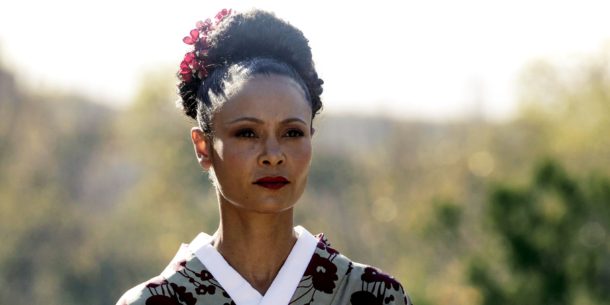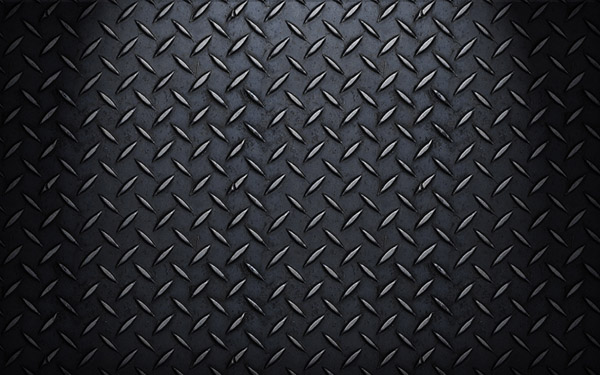Westworld Snuck In Wu-Tang Clan, Rolling Stones, And White Stripes Cover’s On This Weeks Shogun Episode Watch here
Westworld’s period-appropriate cover songs have always been a love-it-or-hate-it proposition, and I have, accordingly, always sort of loved and sort of hated them. There’s a bit of comic sparkle to the entire concept, rolling up a somber player-piano cover of Radiohead or Soundgarden or whatever for each new montage of death and disassociation. It lands as both a weirdly authored, auteurist move for the show, and a bit of levity to punctuate all of its otherwise icy, perfectionist production choices.
But while last season was defined by the player piano, this season has delighted in new variations on the idea. Ramin Djawadi’s cover of The White Stripes’ “Seven Nation Army”
was so buried beneath mountains of sitar that it took awhile to pick out the melody, landing as a bit of wry wit as the show introduced imperialist fantasy park The Raj. And last night’s “Paint It Black” cover
in Shogun World, intended to echo an identical scene from the first season, felt similarly coy, illustrating just how clearly Shogun World would match the titular park. They even cut to the old player piano at one point last night to show that it had now grown so gummy with blood and viscera that it’s not even playing right, as if to underscore the sentiment that there was a new cover-song philosophy in town.
And they made good on that promise with an episode-closing Wu-Tang cover that has got to be the series’ musical high point thus far.
After watching a friend be brutally murdered, new badass madam Akane is forced to dance for a crazed shogun’s pleasure. The song takes its time to gather steam, building a meditative pace before clicking into a 4/4 beat, and even then the melody to “C.R.E.A.M.” takes a second to pick out. Unlike a lot of other Westworld cover jokes, which sort of end with their very existence, the Wu-Tang cover was just preamble to a shocking act of stylized violence. The Raekwon verse finally entered my head just a second before Akame’s hairpin entered the shogun’s. The geysers of blood and the brief moment in which his decapitated body staggers before falling are straight out of a Lone Wolf And Cub movie.
There’s a sort of stylistic synergy here that the show hasn’t dabbled in much before, teasing the notion that as the narrative moves into different parks, so might the show’s filmic and musical influences. (Drum ’n’ bass covers in Futureworld, then?) The only hip-hop act previously featured on the show was Kanye West, whose “Runaway” scored early trailers and was obliquely referenced when Logan gives a toast to the assholes in episode two. By choosing Wu-Tang here they nod to the group’s long-time affiliation with kung-fu films, from their name and endless Shaw Brothers samples to the RZA’s own soundtrack work for Jim Jarmusch and Quentin Tarantino, not to mention his own (ill-fated) foray into directing.
It’s got to be the show’s most audacious stylistic choice ever, and they pulled it off with panache, part of a greater clarity to the overall vision that seems to be settling in this season. In lieu of timeline trickery and mystery-box plotting, Westworld is becoming something much simpler and better—a massively ambitious and masterfully executed sci-fi saga that thoughtfully grapples with many of the issues its viewers are. The musical choices have always been a little on the nose, but it’s hard to argue with clicking into Wu-Tang right as a geisha stabs a shogun in the neck. If he’d listened to the Clan he’d have known to protect it.
[This story contains spoilers for season two, episode five of HBO’s Westworld, “Akane No Mai.”]
The true aficionados of gore within the Westworld fandom certainly enjoyed their first full immersion into Shogun World, the park first teased in the first season finale. In “Akane No Mai,” directed by Craig Zobel and featuring a bevy of new actors including Hiroyuki Sanada (Musashi) and Rinko Kikuchi (Akane), the HBO drama’s universe expanded in its most colorful way yet, with previously unseen tones, locales, action styles and more making their debut.
Of course, Shogun World isn’t the first new park introduced in season two. It follows the arrival of The Raj back in episode three, the same episode where Shogun World was teased oh-so briefly in the final moments. But based on the characters currently in the midst of the sword-swinging landscape — namely, Maeve Millay (Thandie Newton), now more powerful than ever before — Shogun World is instantly the most important of the new locations introduced in season two.
Following the airing of “Akane No Mai,” HBO have updated their in-universe website DelosDestinations.com to share more information about Shogun World. For instance, this is how the site describes the park for “prospective visitors,” such as they are:
“Shogun World is an artfully-curated vacation destination inspired by Edo feudal Japan, where you can experience the full complexity of nature–beauty and danger, good and evil—in a place nestled from the passage of time. The rich seasonal bounties of Japan are all available to you, from the snow-topped coniferous mountainscapes to the bright autumnal koyo, from the regenerative fields of cherry blossom to the summer greenery along the coast.
“A warning to those seduced by our scenic environments: you will be tested in Shogun World as you have never been before. The hosts here are highly skilled: full of life and uncompromising. Navigating the brutal extremities of this world will require strength and discipline beyond the standard slash and burn, so first make the journey inwards and quiet the voice of self-doubt. Then be prepared to raise your katana and answer the call of limitless adventure.”
The diverse terrain has already made itself known, given the snowfall that occurs when Maeve and her party first arrive. There’s even a place called “Snow Lake,” which is apparently close to the access tunnels running through the parks; based on the name, visitors might want to bring a sweater, if not a pair of snow boots. The “bright autumnal” aesthetic speaks for itself, seen in the cherry blossom trees littered throughout the village, and even at Akane’s tea house.
The “uncompromising” violence was on full display in Shogun World as well, with hosts seemingly designed for evisceration and violence at such a grand scale as to be almost cartoonish in nature. In an interview with The Hollywood Reporter, Hiroyuki Sanada describes the way action is depicted in Shogun World as a mixture between realistic fighting and a theatrical performance for the guests; “showtime,” as he calls it. It falls in line with some of the creative influences at play in Shogun World, most especially the filmography of legendary director Akira Kurosawa. Some of the acts of violence, such as Akane butchering the Shogun, are even evocative of Quentin Tarantino’s Kill Bill: Volume 1. Indeed, based on the ending of “Akane No Mai,” in which the Shogun’s army comes storming at a sword-wielding Maeve, Thandie Newton’s host may be in for a fight that rivals the Bride’s battle against the Crazy 88.
Ninja assassins and cop-killing ronin aside, Shogun World and Westworld actually have far more in common than one might suspect. In the episode, it becomes clear that Lee Sizemore (Simon Quarterman) and his narrative team lifted character types and storylines from Westworld and applied them directly to the universe of Shogun World. (“You try writing 300 stories in three weeks!”) As Hanaryo, Tao Okamoto’s snake tattooed warrior is clearly connected to Armistice (Ingrid Bolso Berdal), while Maeve and Akane share a similar connection. Hector Escaton (Rodrigo Santoro), meanwhile, instantly distrusts Musashi; that’s because he can’t shake the feeling like he’s looking in a mirror.
With that said, perhaps the most instructive takeaway for the overarching mythology from our first full episode in Shogun World (Maeve’s power increase notwithstanding) centers on that idea of reflection. Season two has made a meal out of mirror images as a visual cue and also as an emotional theme — that stories shared between two seemingly disparate individuals can bring them closer together. In a grander sense, it lends credence to the idea that the series aims to bring humankind and hostkind closer together. In an even more specific sense, it bolsters a theory about the mysterious human-host hybrid that the late Dr. Ford (Anthony Hopkins) instructed Bernard (Jeffrey Wright) to build. Doubling down on it now: the Man in Black (Ed Harris) will face off against a digitally duplicated version of his younger self (Jimmi Simpson) before the series ends, if not the season.






